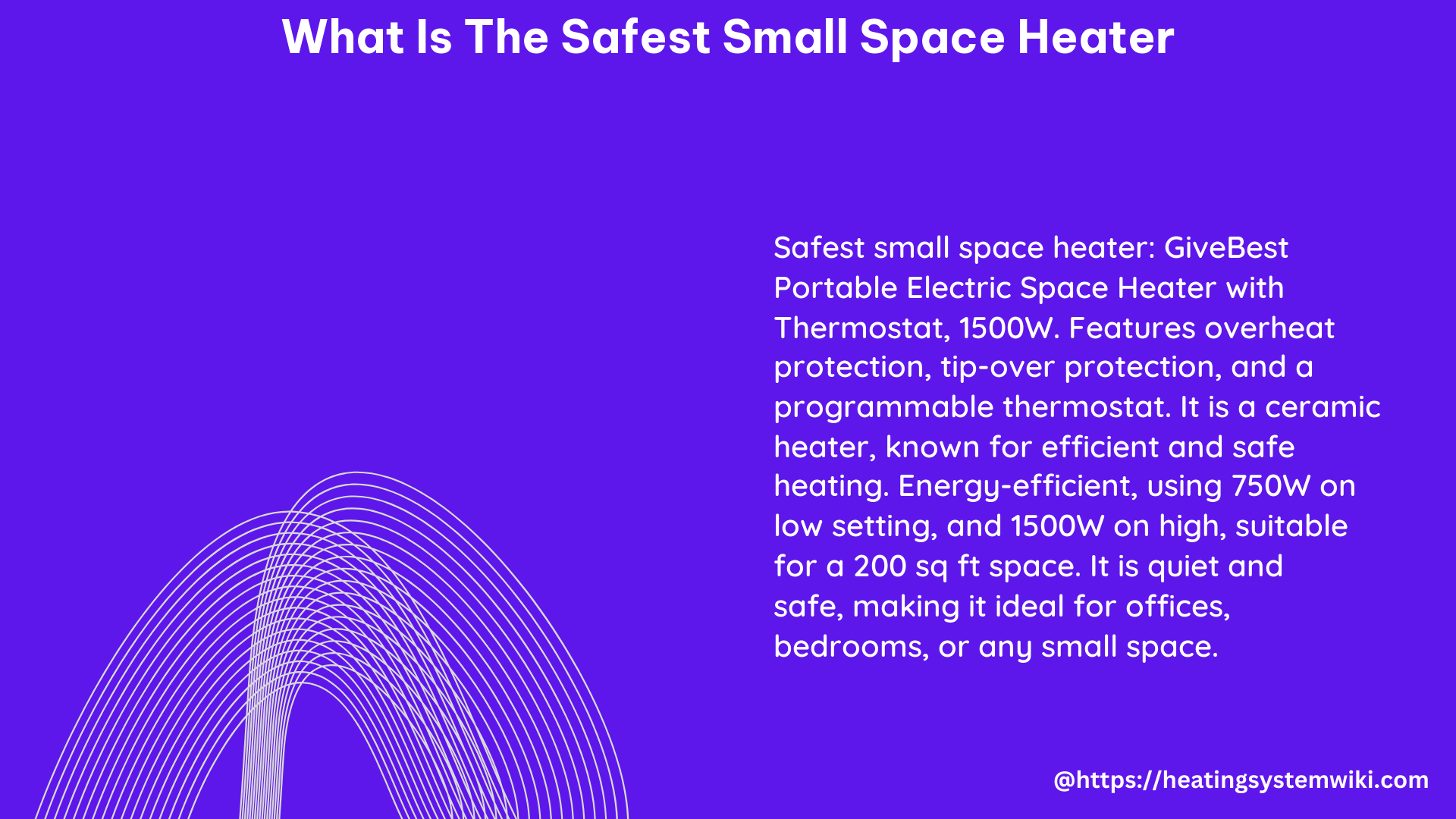When it comes to staying warm during the colder months, small space heaters can be a convenient and efficient solution. However, safety should be the top priority when selecting and using these devices. In this comprehensive guide, we’ll explore the key factors to consider when choosing the safest small space heater for your needs.
Safety Features: The Cornerstone of Safe Space Heating
The safety of a small space heater is paramount, and there are several critical features to look for:
- Tip-Over Protection: This feature automatically shuts off the heater if it is accidentally knocked over, preventing potential fires or injuries.
- Overheat Protection: Quality small space heaters are equipped with sensors that detect when the unit is getting too hot and automatically shut it off to prevent overheating.
- Cool-Touch Housing: The exterior of the heater should remain cool to the touch, even during extended use, to minimize the risk of burns.
- Automatic Shut-Off: In addition to tip-over and overheat protection, the best small space heaters will have an automatic shut-off feature that triggers when the desired temperature is reached or if the unit is left unattended for a certain period.
- Safety Certifications: Look for small space heaters that have been tested and certified by reputable organizations, such as Underwriters Laboratories (UL) or Intertek (ETL), to ensure they meet rigorous safety standards.
Heating Capacity: Matching the Heater to the Space

The heating capacity of a small space heater is crucial for ensuring it can effectively warm the intended area without wasting energy or posing a safety risk. Consider the following guidelines:
| Room Size (sq. ft.) | Recommended Heating Capacity (Btu/h) |
|---|---|
| 100-150 | 10,000 – 15,000 |
| 150-250 | 15,000 – 25,000 |
| 250-400 | 25,000 – 40,000 |
It’s important to note that these are general guidelines, and the actual heating capacity needed may vary depending on factors such as ceiling height, insulation, and the number of windows in the room.
Energy Efficiency: Maximizing Warmth, Minimizing Costs
Energy efficiency is another critical consideration when selecting a small space heater. Look for models with the following features:
- Thermostat Control: A thermostatically controlled heater will automatically adjust its output to maintain the desired temperature, preventing energy waste from overheating the space.
- Energy-Efficient Heating Elements: Advanced heating technologies, such as ceramic or infrared elements, can provide efficient and targeted heating, reducing energy consumption.
- Energy Star Certification: Small space heaters with the Energy Star label have been independently tested and verified to meet strict energy efficiency standards, ensuring they use less energy than non-certified models.
Installation and Placement: Ensuring Safe Operation
Proper installation and placement of a small space heater are essential for safe and effective operation. Follow these guidelines:
- Level Surface: Place the heater on a flat, level surface away from foot traffic to prevent it from being knocked over.
- Clearance from Combustibles: Maintain a minimum clearance of 3 feet (0.9 m) from any flammable materials, such as curtains, furniture, or bedding.
- Ventilation: Ensure the heater is placed in a well-ventilated area and never block the air intake or exhaust vents.
- Supervision: Never leave a small space heater unattended, and always turn it off before going to bed or leaving the room.
DIY Considerations: Safety First
For those interested in a DIY approach to small space heating, it’s crucial to follow all safety guidelines and best practices. This includes:
- Proper Heater Selection: Choose a heater that is the right size for the room and has all the necessary safety features.
- Professional Installation: If using a vented space heater, such as a natural gas or propane model, have it professionally installed by a licensed technician.
- Annual Maintenance: Vented space heaters should be professionally inspected and serviced every year to ensure they are operating safely and efficiently.
- Smoke and Carbon Monoxide Detectors: Install working smoke and carbon monoxide detectors in the room where the small space heater is used, as an added safety precaution.
By prioritizing safety, matching the heater to the space, and following best practices for installation and use, you can enjoy the warmth and comfort of a small space heater while minimizing the risks.
